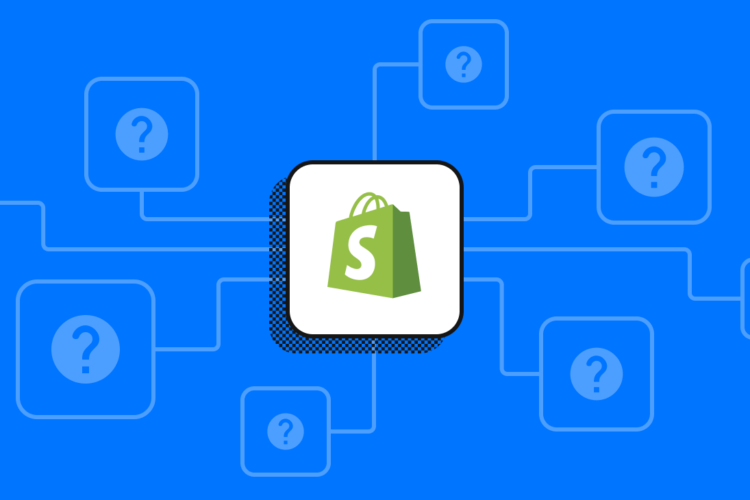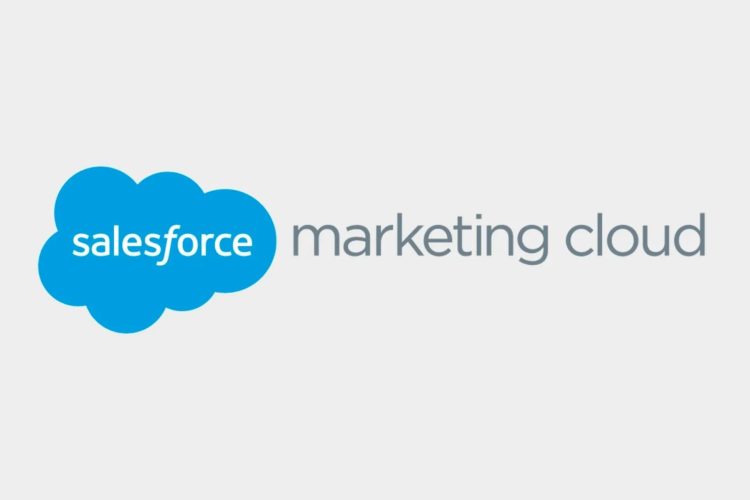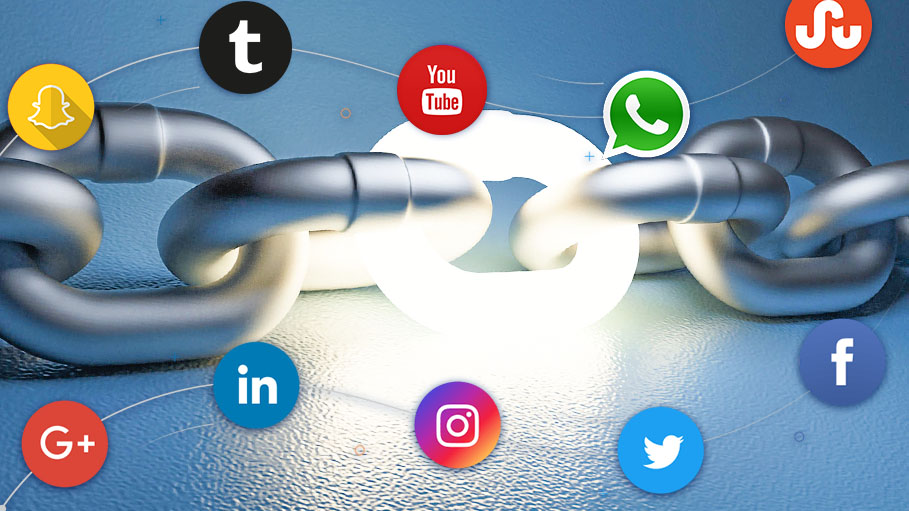
Currently, Social media usage is one of the most popular online activities, and the data can prove this. In 2021, more than 4 billion people will use social media across the world. Isn’t it huge? This is projected to increase to almost 6 billion in 2027. This proves that social media has become an integral part of people’s daily lives.
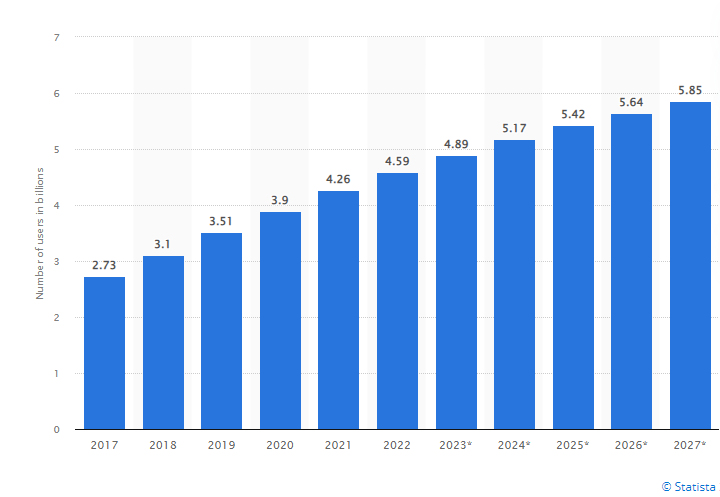
What is Social Media?
Social media refers to the use of online platforms and apps to connect with others and share content. This can include text, images, videos, and other forms of media. Examples of social media platforms and apps include Facebook, Twitter, Instagram, Snapchat, and YouTube.
And… Social Media Marketing?
Well, using social media for the purpose of marketing products and services for businesses is Social media marketing. It is one of the most efficient and effective ways to connect with customers and promote your brand. It allows you to reach a large audience quickly and easily, and it’s a great way to build relationships with your customers.
Social media marketing, or SMM, is a form of Internet marketing that involves creating and sharing content on social media networks in order to achieve your marketing and branding goals. SMM includes activities like posting text and image updates, videos, and other content that drives audience engagement, as well as paid social media advertising.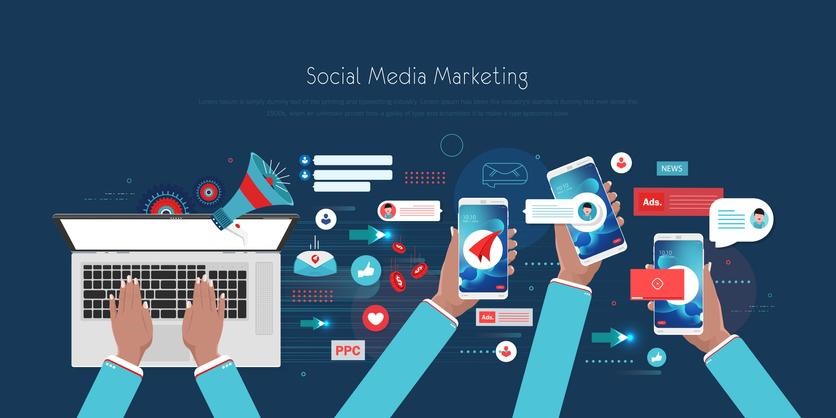
The platform of social media is another channel of Digital Marketing that businesses and brands must seek to influence the content. In contrast with pre-Internet marketing, such as TV ads and newspaper ads, in which the marketer controls all aspects of the ad, with social media, users are free to post comments right below an online ad or an online post by a company about its product. Companies are increasingly using their social media strategy as part of their traditional marketing effort using magazines, newspapers, radio advertisements, and television advertisements.
No doubt, social media marketing is one of the most efficient and effective ways to connect with customers and promote your brand. It allows you to reach a large audience quickly and easily, and it’s a great way to build relationships with your customers. However, as social media evolves, so does the way brands need to use it to reach their target audiences. There are big challenges with social media data and security, which raise questions about its usage.
Future of Social Media Marketing and the Trends We Need to Know
As we move into the future, it’s important for brands to be aware of the changing landscape of social media marketing and to adapt their strategies accordingly. Let’s explore the future of social media marketing and the trends we need to know:
1. Influencer Marketing
Influencer marketing is one of the most popular and successful social media trends that has made its place among the audience very quickly. Influencer marketing is a social media marketing strategy in which marketers partner with influential people in their industry to promote their products or services. These influencers may have a large social media following or be respected experts in their field.
 Marketers typically work with influencers to create sponsored content, in which the influencer promotes the marketer’s product or service in a post on their social media account. The influencer may also host a giveaway or contest on their account, or they may simply mention the product in a post.
Marketers typically work with influencers to create sponsored content, in which the influencer promotes the marketer’s product or service in a post on their social media account. The influencer may also host a giveaway or contest on their account, or they may simply mention the product in a post.
Facts to Know About Influencer Marketing
In 2022, the influencer marketing market is projected to increase by $16 billion.
In the upcoming year, 63% of marketers plan to increase their budget for influencer marketing.
In the United States, the influencer marketing budget was 2.42 billion US dollars, which is expected to increase by 25% in 2023 (Source: Statista 2021).
Among teens, influencer marketing is so popular that 70% of teens trust influencers more than traditional celebrities.
49% of consumers make decisions based on influencer recommendations.
It is found that influencer marketing campaigns earn $5.78 for every dollar spent.
With such astonishing facts, it is proven that influencer marketing is a thing of the future, and it is going to rule social media marketing in the future.
Influencer marketing aims to build brand awareness and trust and encourage potential customers to purchase the product or service. Because it allows audiences to connect with brands and give them a personal touch, influencer marketing is still relevant and will continue to be so in the future.
Influencer marketing can be implemented in different ways in the future. The right audience, the right influencers, and the right tools are essential for influencer marketing success.
Things to keep in mind when you are considering influencer marketing
- Make sure the influencer you choose is a good fit for your brand. Their audience should be relevant to your target market, and their values should align with your own.
- Be clear about your goals for the partnership. What do you want to achieve? How will you measure success?
- Be prepared to invest some money. Influencer marketing can be costly, depending on the size and reach of the influencer you choose to partner with.
- Be patient. Influencer marketing takes time to build relationships and create content. Don’t expect results overnight.
One can learn how to utilize influencer marketing by learning its strategies and techniques in a Digital Marketing course.
Influencer marketing trends that will work in future
Micro-influencers: Influencers with a high engagement rate but a small following are known as micro-influencers. They don’t have celebrity status but are experts in a particular field. These influencers have between 1,000 and 100,000 followers and are known for their opinions. For example, a group of swimmers is connected on social media and has a big influence on the purchase decisions of other swimmers compared to any other top celebrity.
Aakhiri_pasta, a Beauty, Food, and Travel influencer on Instagram, is another example. She makes videos of all kinds to sway individuals interested in beauty tips, makeup, travel, or food. Kavita, the account’s creator, posts her opinions, videos, and images based on the account’s theme to her more than 8,000 followers.

Storytelling: The art of using a story to make a point and make a thoughtful, emotional connection with the audience.
For instance, Airbnb tells the story of its brand using experiences and images. They embellish client photos with narratives before publishing them as posts and albums on different social media platforms. It enhances the authenticity of their experience and motivates more individuals to use Airbnb’s services. By using genuine, user-generated content to promote their company, Airbnb has nailed the art of storytelling. Airbnb has expertly created a brand that encourages inclusiveness, belonging, acceptance, adventure, and shared values.
In 2017, Airbnb implemented a nondiscrimination policy on its website in response to complaints that some of its hosts mistreated guests based on race and gender. In order to support Airbnb’s consistent commitment to community-led and culturally diverse travel, they launched the “We Accept” campaign.
The advertisement invites viewers to consider the central message that is defined by the bold font in the center of the frame by combining basic photography with somber background music. The end result is passionate and powerful.
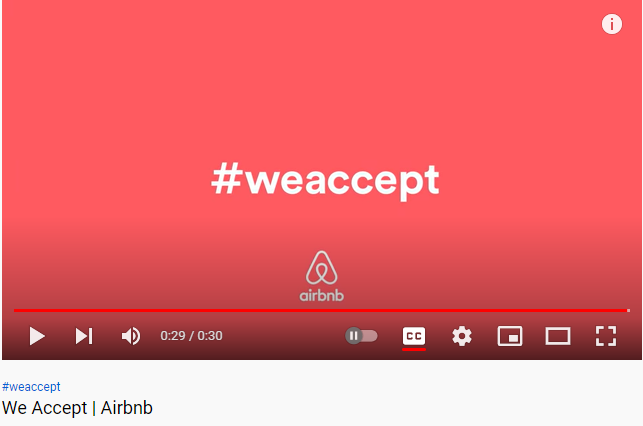
Video content: YouTube and Instagram influencers are gaining more power by using video content, a growing trend.
Live shopping: It is a recent craze that will transform the way people shop. Through interactive content, the major influencers in live shopping market products to their communities.
2. Artificial Intelligence and Machine Learning
Artificial Intelligence and Machine Learning have progressed in use, and they are now used more frequently in digital marketing. The use of AI and ML in marketing has increased dramatically between 2018 (29%) and 2020 (84%), which is a significant increase. Even if AI doesn’t yet have the same level of intelligence as humans, it can develop and think like them. It is assumed that, eventually, AI will surpass human intelligence.
AI and ML in Digital Marketing are used for various applications like Chatbots, recommendation systems, Content creation, Predictive analysis, and a lot more. These applications are used by numerous companies for their social media campaigns and are a huge hit. The reasons are many. It has raised ROI for marketers and uses data-driven research that addresses customers more accurately. AI helps in the analysis of consumer purchasing habits and behavior, which gives firms a good notion of what the consumer wants.
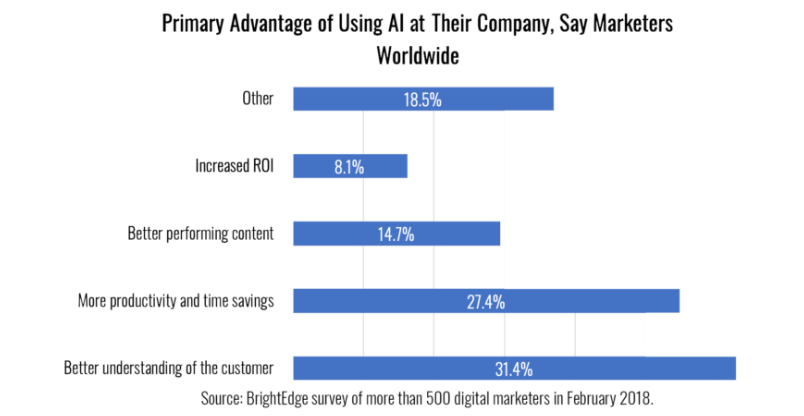
AI and ML basically help streamline the social media strategy of the brands. You cannot just post using AI but can also monitor and analyze your social media channels with AI. Basically, AI is for every social media marketer, and you don’t need to be a data scientist to get that. You can start using several tools available and have a massive impact with their help.
For example, a social media platform, Pinterest, uses AI to offer hyper-personalized content to its users. With billions of Pins, Pinterest is recognized for its image-centric discovery platform, but it takes a very strong AI engine to continue providing each of its 400 million users with a pertinent, customized experience. It is able to do this because of a deep learning algorithm that displays comprehensive results for every search made by the user. The platform uses AI to attract more people to make purchases of things they see on Pinterest’s website or mobile app and to grow its user base to increase advertising income.
See the below image. As soon as you create an account on Pinterest, you get a message with your name and a message intending to personalize recommendations of Pins for you.
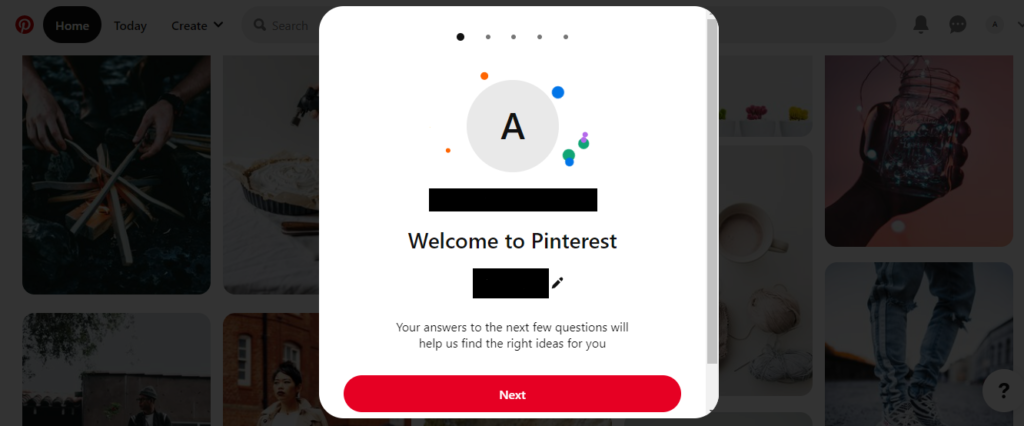
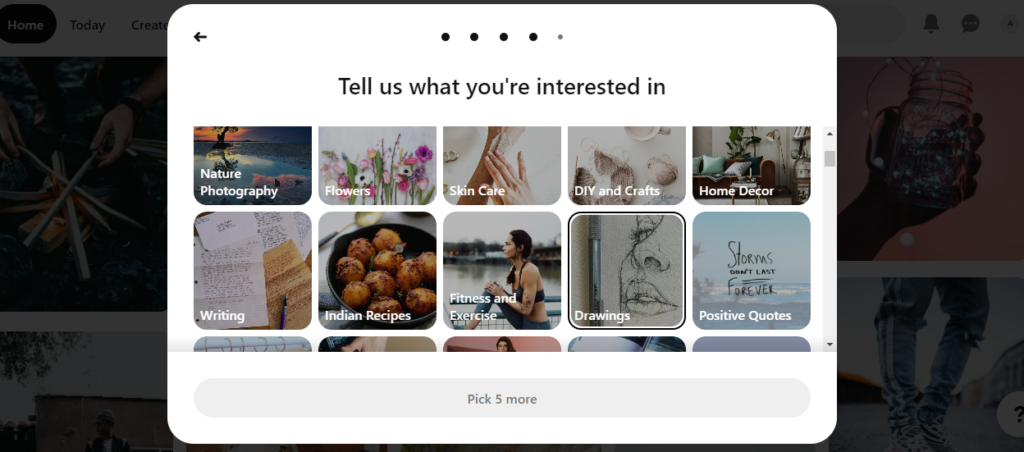
3. Stories
First started by Snapchat in 2011, Instagram soon adopted Stories. Soon, Facebook and WhatsApp too started Stories to involve users. Recently, Twitter launched Fleets in 2020, just like Stories. Stories on social media are typically short, text-based posts that are meant to be shared with a wider audience. They can be about anything, from personal experiences to current events.
There are a few different types of stories on social media. Some platforms, like Snapchat and Instagram, have built-in stories features that let users share photos and videos that disappear after 24 hours. Facebook and Twitter also have “Stories” features, which are typically used for news stories from media outlets. Some platforms, like Wattpad, are specifically designed for sharing stories.
Every day, around 500 million users watch Instagram stories. Quite Interesting! Stories are not only easy to create but are highly engaging and interactive. Stories are and will be a powerful trend in social media marketing in future. Lets validate this by looking at some facts:
- There are 4 million advertisers that use Stories every day to promote their offerings, and 1/3rd of the most viewed Instagram Stories are from business accounts.
- Your retention rate increases to 70% when you post up to 5 tales every day (Source: Social Insider).
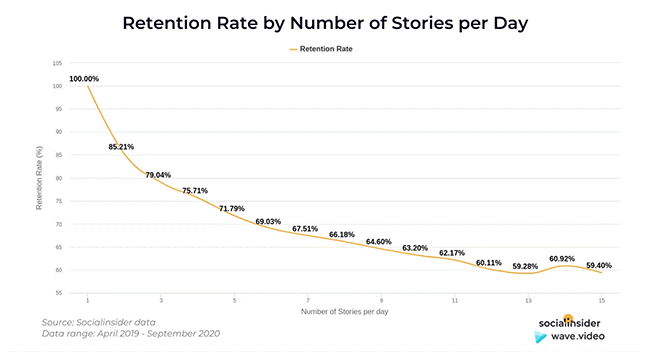
- Gen Z users are more interested to see Stories on Snapchat. Still, more millennial users are active on Instagram.
- Stories are known by their different names on different platforms, like Stories on Instagram and Facebook, Fleets on Twitter, Shorts on YouTube, Status on Whatsapp, etc.
Stories are everywhere today and should be a major part of businesses’ social media marketing strategies. It’s another way to demonstrate your brand’s features and connect with the audience.
4. Augmented Reality
In augmented reality (AR), computer-generated visuals or information are superimposed on real-world images or objects. Businesses can design immersive and interactive experiences for their customers using augmented reality (AR). It is a very effective instrument that can be utilized to increase brand recognition, stimulate sales, and establish enduring bonds with clients.
We may not realize it, but when we use filters on social media, we are actually using Augmented Reality. In the future, many brands may roll out features where customers can try products using AR on social media. This will make shopping even more interesting. Many brands are already doing it, and they are on social media with a ‘Try on’ feature that lets users try the products from selected brands and can make a purchase decision.
AR can be used, for instance, to develop interactive product presentations or augmented reality advertisements that let viewers have a more immersive experience with the products or services. AR can also be employed to produce interactive content for social media websites like Instagram and Snapchat. By doing this, businesses may reach a larger audience and give people more memorable experiences. Brands are already using AR on social media to improve their promotions using branded filters. For e.g., Taco Bell on Snapchat created a filter that turns the faces of users into TACOS. This campaign was a hit and became the most famous on the platform, and it was viewed more than 224 million times in a 24 hour time period.

5. Video Content
With the change in the digital landscape, social media has also changed completely. Video marketing is one such platform that creates value, relevancy, and flexibility for customers as well as businesses. The main focus of video marketing is using videos to advertise your goods and services. Along with improving engagement, it informs customers about your goods and services. The massive industry of video marketing is crucial to developing the digital marketing sector. Those who have made a name for themselves in the video marketing sector ought to be aware of this tool’s potency.
The answer to the question “Why video?” is straightforward. The format for video content is adaptable and interesting as well. It provides a clear image of what is happening and is very simple to publish on a variety of platforms. Because it is interesting and entertaining, the customers like it. You only require internet connectivity.
76% of marketers believe that videos on social media produce more conversions than any other technique of advertising or marketing. 63% of the companies are already using video marketing, which resulted in an ROI boost. But why is Video marketing success on social media? The reasons are here:
- Connects audience with the brand: Videos not only create an impression on the viewer but also connect users with the brands. Visual material has the power to connect people in a way that written content will never be able to. This assertion is supported by the growth of YouTubers as businesspeople. YouTube’s popularity increased as a result of people realizing that sharing educational content enables them to forge closer connections with their audience.
For example: In 2015, Apple launched the #ShotOniPhone campaign that revealed the brand’s identity, and creativity and connected the audience with the brand. Apple encouraged individuals to submit iPhone-shot images in 2015 as part of a contest. The reward was the opportunity to have one of 10,000 billboards around the world display their art. In order to maintain the #ShotOniPhone momentum, Apple created their Instagram account in 2017. This was done as a sort of organic advertising campaign to generate a ton of user-generated content. It succeeded! There are more than 16 million posts on Instagram with the hashtag #ShotOniPhone.
- Improves conversion rates: Video marketing has often proved to lead to more conversion rates. To begin with, including a video on a landing page will increase the amount of time visitors stay on your website. With interesting content, you can increase their curiosity and desire to explore the rest of your website with exciting content.
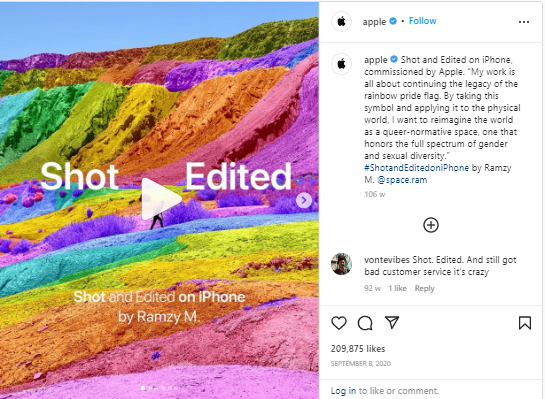
- Builds brand awareness: Videos are a perfect way to build brand awareness. The promotion of your brand is one of your key objectives, and videos are excellent for that purpose. Videos are also more shareable than any other form of content. According to statistics, individuals share videos 12 times more frequently than they do text and images combined.
These are a few reasons why social media marketers prefer video marketing.
Are You Prepared for the Future of Social Media Marketing?
A crucial component of any marketing strategy is social media. Trends like videos and influencer marketing will impact the future of social media marketing, augmented reality, and chatbots that AI powers. Using these trends can enhance the success of your social media marketing strategies.
Which trend do you believe will have the most significant impact on social media marketing going forward? Please tell us in the comments.
Bio
AKRITI GALAV
Akriti Galav is a Content Strategist at Great Learning with over 7 years of experience in content marketing. She has a deep understanding of digital marketing, management, and other topics that create a lasting impact on the audience. She is an avid researcher and has a knack for finding the latest studies, reports, original research, and up-to-date information to include in her content.
Author
Asad Gill
Asad Gill is a serial entrepreneur who founded SEO Calling, a holdings company that owns: Provide top-rated SEO services, and product selling over 50 countries with #1 worldwide digital marketing consultancy firm. (Contact: [email protected]) (Skype: [email protected])




